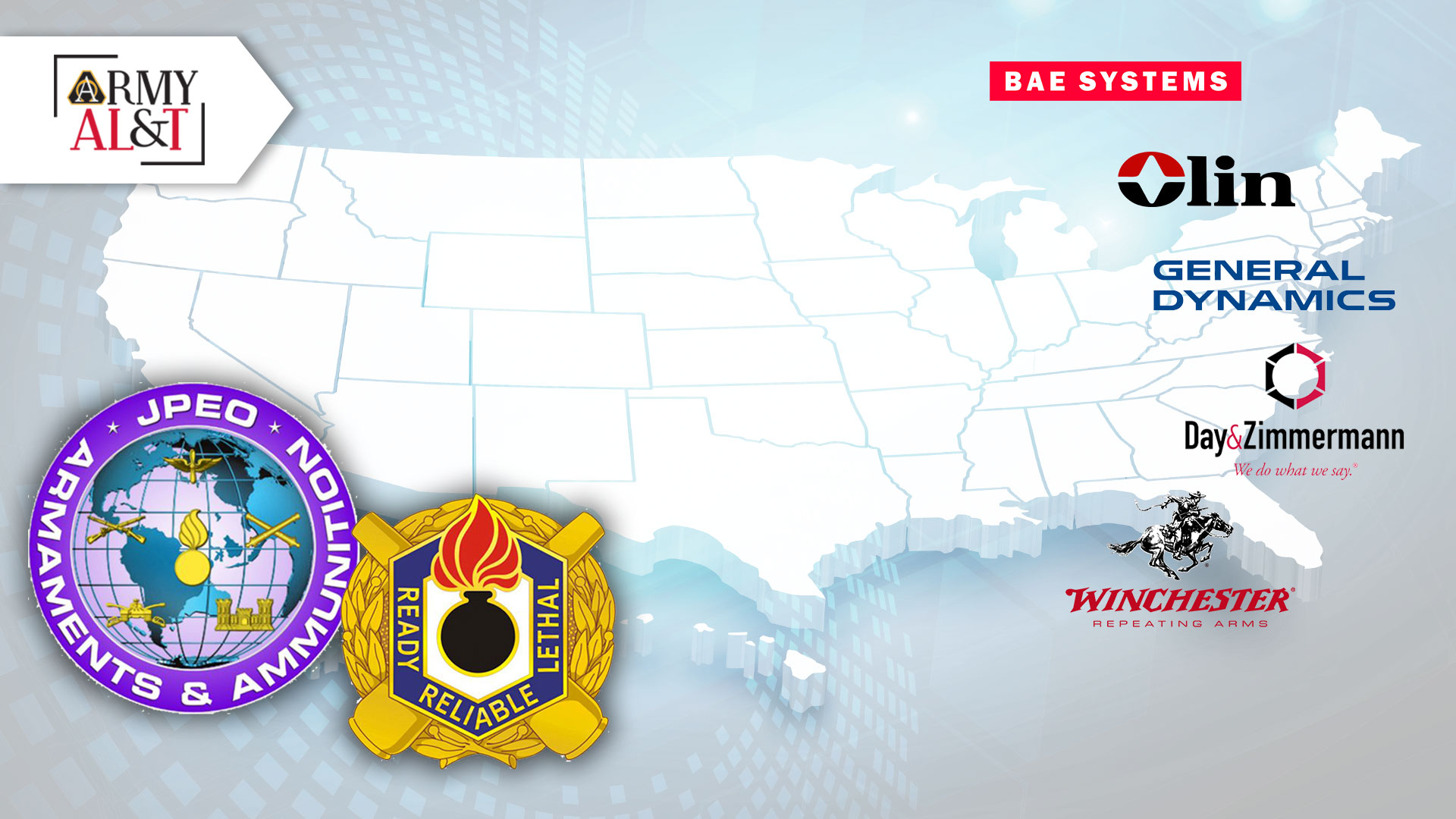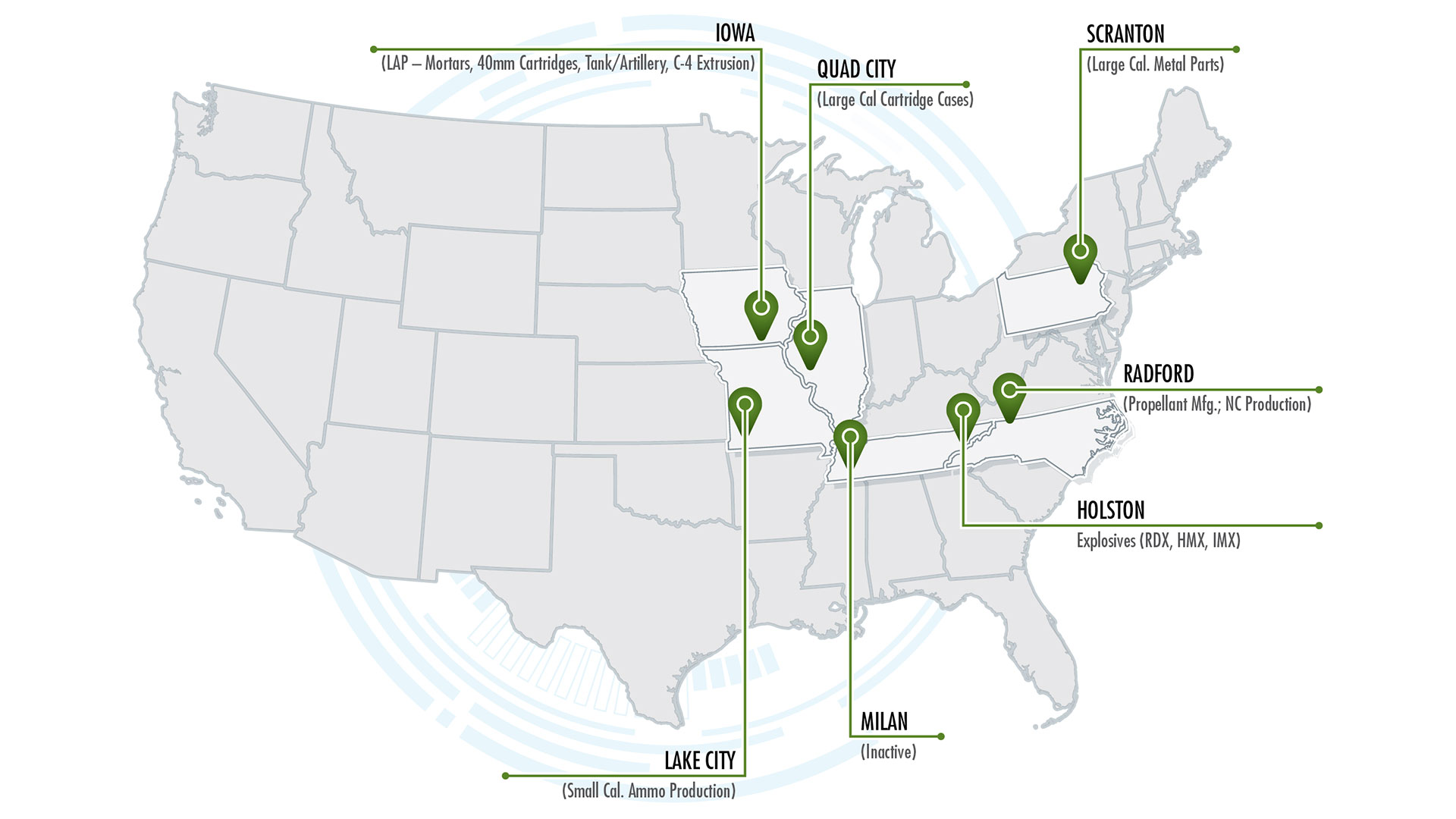
By Rebecca Leonard
Government-owned, contractor-operated (GOCO) Army ammunition plants serve a vital role in producing ammunition for the U.S. armed forces. Energetic and inert materiel components are produced at these plants, which also carry out the final assembly of complete rounds, such as artillery, bombs and small caliber ammunition. To assure the readiness of the joint force, it is necessary to modernize these valuable components of the defense industrial base. In addition to producing currently used ammunition items, the Army must also plan for the future, ensuring that the plants will be ready to support production of ammunition items now in development and testing.
The Army’s Production Base Support (PBS) program funds modernization improvements, recapitalization projects and plant sustainment operations. The Joint Program Executive Office for Armaments and Ammunition (JPEO A&A) is designated as the Single Manager for Conventional Ammunition Executor, and it works with the military services, ammunition program managers and plant operators to identify plant requirements and prioritize modernization projects. Prioritizing uses a numerical scoring framework, including weighted criteria and considerations such as: 1) criticality of the requirement (including the facility’s condition); 2) guidance from DOD leadership and Congress; and 3) a facility’s ability and capacity to execute the work.
The weighted criteria aim to address key objectives like improving safety and environmental compliance, ensuring operational continuity, reducing plant operating costs and improving the quality of the work environment. Other key considerations include improving operating effectiveness; increasing efficiencies and, whenever possible, incorporating automation and robotic-type technologies, especially to restructure and upgrade hazardous operations that have historically been done by hand. Immediate safety and environmental compliance issues are considered “must-fund” projects and are prioritized above all others. Project ranking is a critical process to ensure that PBS funding is used in the most efficient way possible.

KEEP THE AMMO COMING: Modernization projects are underway at six government-owned, contractor-operated Army ammunition plants to expand capacity, upgrade production lines and make other improvements. A seventh plant is inactive. (Map by USAASC)
Following are the Army ammunition plants and current modernization initiatives.
Holston Army Ammunition Plant
Location: Kingsport, Tennessee
Contractor: BAE Systems
Key facts: Established in 1942, Holston Army Ammunition Plant covers 6,000 acres and employs 23 Army civilians. Holston is the major supplier of explosive materials to DOD. The facility has state-of-the-art equipment and capabilities for nitration chemistry, acid handling and recovery, and other chemical-processing operations.
Current significant projects funded through the PBS: Ongoing efforts to expand the capacity of explosives production. Expansion efforts include constructing new and upgrading existing production facilities, as well as the necessary expansion and upgrades to support infrastructure across the facility.
Radford Army Ammunition Plant
Location: Radford, Virginia
Contractor: BAE Systems
Key facts: Established in 1941, Radford Army Ammunition Plant covers 6,901 acres and employs one military member and 22 Army civilians. Radford manufactures a wide variety of propellants and propellant ingredients used in rocket manufacturing, and is a major supplier of propellants and energetics for DOD, providing over 5 million pounds of propellant and energetics in 2020 alone.
Current significant projects funded through PBS: Construction of a new nitrocellulose production facility (highlighted below). Nitrocellulose is a critical ingredient used in all propellant production.
Lake City Army Ammunition Plant
Location: Independence, Missouri
Contractor: Olin Winchester
Key facts: Established in 1941, Lake City Army Ammunition Plant covers 3,935 acres and employs one military member, 29 Army civilians and one JPEO A&A on-site civilian. Lake City, a main supplier of DOD small and medium caliber ammunition, produces over 1 billion small caliber rounds per year.
Current significant projects funded through PBS: Efforts are ongoing to improve the quality of the plant work environment, which includes reducing repetitive motion, increasing the comfort of the work area, and reducing the need for personal protective equipment; and to prepare the facility for production of the new 6.8 mm ammunition, which directly supports the Army’s Cross-Functional Team for Soldier Lethality.
Iowa Army Ammunition Plant
Location: Middletown, Iowa
Contractor: American Ordnance (a Day & Zimmerman subsidiary)
Key facts: Established in 1941, Iowa Army Ammunition Plant covers 19,011 acres and employs one military member and 24 Army civilians. Iowa is a load-assemble-pack facility. Its production line includes artillery, grenades, tank ammunition and C4 demolition charges.
Current significant projects funded through PBS: Recent efforts include the design of a new artillery load-assemble-pack line, improving the facility’s energy efficiency, safety and infrastructure.
Scranton Army Ammunition Plant
Location: Scranton, Pennsylvania
Operator: General Dynamics
Key facts: Established in 1953, Scranton Army Ammunition Plant covers 15.3 acres and employs eight Army civilians. Scranton is a main manufacturer of large caliber metal projectiles and mortar projectiles for DOD.
Current significant projects funded through PBS: Recent projects at Scranton Army Ammunition Plant have focused on infrastructure improvements, while planned efforts will address improvements to the production areas and new XM series 155 mm projectiles.
Quad Cities Cartridge Case Facility
Location: Rock Island, Illinois
Operator: U.S. Navy
Key facts: Established in 2011, Quad Cities Cartridge Case Facility comprises 299 buildings and has a storage capacity of 170,000 square feet. Quad Cities manufactures large caliber steel and brass deep-drawn cartridge cases.
Current significant projects funded through PBS: Most of Quad Cities Cartridge Case Facility is considered “laid away,” which is the manner in which its capabilities are being preserved while it is an inactive facility.
This sidebar was published to accompany the article “EXTREME MAKEOVER” published in the Summer 2021 Issue of Army AL&T Magazine.







